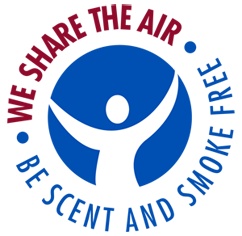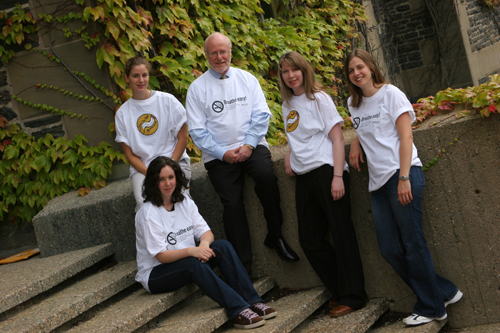Smoke Free
Dalhousie is a no-smoking university. It is committed to providing a safe and healthy place in which to work and study. The university's non smoking policy came into effect on September 1, 2003. The policy prohibits smoking in all university buildings, including university residences, on university property and in university vehicles.
Moving to a smoke-free policy was a pioneering effort. Dalhousie was the first university in Canada to declare its property 'smoke-free'. The decision to adopt such a policy is strongly supported by students, faculty and staff. More than 82 per cent of Dalhousie community members who responded to a 2003 survey supported the policy's adoption.
Under this policy those who wish to smoke are asked to leave university property. While smoking on public property smokers are asked to avoid littering, to be respectful of others, and of course to abide by the municipal by-law.
This page is part of our communications campaign. If you cannot find the information you are seeking for, please contact us.
Stop Smoking Resources
- Health Canada -
- Halifax Regional Municipality -
- The Nova Scotia Legislature -
- World Health Organization -
Ìý
Recognition
Lung Association of Nova Scotia
The Lung Association's Chairman, John McNeil, has presented Dalhousie Vice President, Bryan Mason, with a plaque to congratulate the University for instituting a total smoke ban. The inscription reads:
"Dalhousie University is the first University in Canada to provide a non-smoking environment for its entire campus community. Once again, a Nova Scotia institution, Dalhousie University, is giving leadership and setting an example for the entire country. The Lung Association of Nova Scotia applauds Dalhousie for taking this positive action that will provide a healthy working and learning environment for everyone connected with the University."
Heart and Stroke Association of Nova Scotia
Clare O'Connor, Director of Policy and Government Relations with the Hearth and Stroke Association of Nova Scotia, has congratulated the University on adopting a campus-wide smoke-free policy.
O'Conner noted "Decisive action and leadership is the only way to effectively move toward improved health. Dalhousie University's historical and innovative campus-wide smoke-free policy is an example of the decisiveness and leadership that is required."
Nova Scotia Provincial Health Council
C. A. Randall, Chair of the Nova Scotia Provincial Health Council, presented Dalhousie University with a Healthy Communities Award in recognition of Dalhousie becoming "the first University in Canada to implement a 100% smoking ban on all university property".
Smoke-Free Nova Scotia
At its 2005 annual meeting Dr. R. Strang, the President of Smoke-Free Nova Scotia, presented the University with a certificate in recognition of Dalhousie's leadership in tobacco control in Nova Scotia. Accepting on behalf of the University were D. Boutillier and F. Fyfe, current and past chairs of the Environmental Health and Safety Committee.


 As many of you know, the University's Environmental Health and Safety Committee has proposed that smoking be prohibited on all Dalhousie-owned property. Currently smoking is restricted to areas five meters from buildings. Effective September 1, smoking will be prohibited on all University-owned property and grounds, in student residences, and in University vehicles.
As many of you know, the University's Environmental Health and Safety Committee has proposed that smoking be prohibited on all Dalhousie-owned property. Currently smoking is restricted to areas five meters from buildings. Effective September 1, smoking will be prohibited on all University-owned property and grounds, in student residences, and in University vehicles.